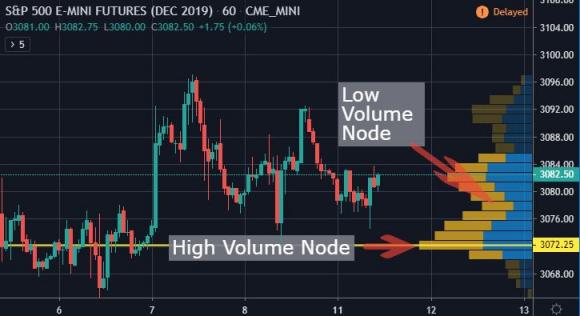Introduction
In the realm of financial markets, where countless investors strive to navigate the complexities of option trading, a crucial indicator often overlooked is volume. Beyond strike price, expiration date, and price fluctuations, volume holds immense significance, shaping market dynamics and providing valuable insights for successful trading strategies. This comprehensive guide will delve into the profound importance of volume in option trading, equipping traders with the knowledge and understanding to make informed decisions and maximize their potential returns.
Volume: A Reflection of Market Interest
Volume, in essence, represents the number of contracts traded over a specified period, acting as a measure of market activity and interest in a particular option. High volume indicates substantial buying or selling pressure, signaling a significant influx or exodus of participants in the market. This surge or decline in investor involvement directly impacts the option’s price and overall market sentiment. Understanding volume patterns can provide traders with an edge, enabling them to anticipate market movements and gauge the underlying momentum behind an option.
Volume as a Signal of Volatility
Traders can use volume to gauge the volatility of an option. Increased volume often coincides with heightened volatility, implying that the option’s value is experiencing rapid fluctuations. Conversely, low volume suggests a more stable market, indicating that the option’s value is less likely to experience significant changes. By monitoring volume, traders can assess potential risks and adjust their strategies accordingly, opting for higher-volume options to capitalize on volatility or seeking lower-volume options for more conservative trades.
Volume’s Influence on Liquidity
Liquidity, which refers to the ease with which an asset can be bought or sold, is directly affected by volume. Higher volume typically translates to increased liquidity, making it easier for traders to enter and exit positions without encountering significant price slippage or execution delays. Liquid options can be particularly advantageous for scalpers and other short-term traders who rely on quick executions and precise timing. Conversely, low volume can lead to illiquid options, where executing trades can become challenging and subject to wider bid-ask spreads, impacting potential profits.
Volume in Relation to Support and Resistance Levels
Volume can play a pivotal role in identifying support and resistance levels – key price points where the market has historically shown difficulty in breaking through. When volume spikes coincide with a support or resistance level, it suggests that a significant number of traders are actively buying or selling at that price, creating a temporary equilibrium. Traders can leverage this information to make informed decisions about potential reversals or breakouts, and to develop appropriate trading strategies based on market sentiment.
Volume as a Trend Indicator
In conjunction with price action, volume can be a valuable tool for identifying and confirming market trends. Rising volume accompanying an uptrend signals that buyers are aggressively entering the market, pushing prices higher. Conversely, increasing volume during a downtrend suggests that sellers are actively driving prices lower. By observing volume patterns and their relationship to price movements, traders can gain valuable insights into the strength and momentum of a trend, enabling them to refine their trading decisions and ride market waves successfully.
Volume as a Contrarian Indicator
While volume typically reinforces market trends, it can also serve as a contrarian indicator in certain situations. When volume diverges from price action, it can provide traders with valuable information about potential market reversals or corrections. For instance, if an uptrend is accompanied by decreasing volume, it may indicate a waning of buying pressure, foreshadowing a possible reversal. Likewise, a downtrend accompanied by increasing volume could signal exhaustion among sellers, hinting at a potential market bottom. By astutely interpreting volume divergences, traders can gain an advantage by anticipating market shifts and positioning themselves accordingly.
The Impact of Open Interest on Volume
Open interest, representing the total number of outstanding option contracts that have not yet expired, interacts dynamically with volume. Increasing open interest combined with high volume can indicate a strengthening trend, as more traders enter and hold positions. Conversely, falling open interest alongside high volume may suggest that traders are unwinding their positions, potentially leading to a reversal or correction. By analyzing the interplay between volume and open interest, traders can gain a comprehensive understanding of market dynamics and make informed decisions about their trading strategies.
Volume in Options Chains
Option chains provide a visual representation of the available options for a particular underlying asset, with strike prices listed vertically and expiration dates horizontally. Volume distribution across the options chain can offer valuable insights into market sentiment and potential trading opportunities. Traders can identify areas of high volume concentration, signaling strong interest or speculative activity, and make informed decisions about which options to consider for their trading strategies.
Conclusion
In the intricate world of option trading, volume reigns supreme as a crucial indicator that unlocks a wealth of valuable information for successful traders. By understanding the significance of volume and its implications for market volatility, liquidity, support and resistance levels, trend analysis, and the interplay with open interest, traders can gain a profound advantage. The insights gleaned from volume analysis empower traders to make informed decisions, anticipate market movements, and maximize their potential returns.Harnessing the power of volume in option trading is a key to unlocking profitable opportunities and achieving long-term success in the dynamic financial markets.

Image: theforexscalpers.com

Image: www.topstep.com
Why Volume Is Important In In Option Trading

Image: www.quantifiedstrategies.com






